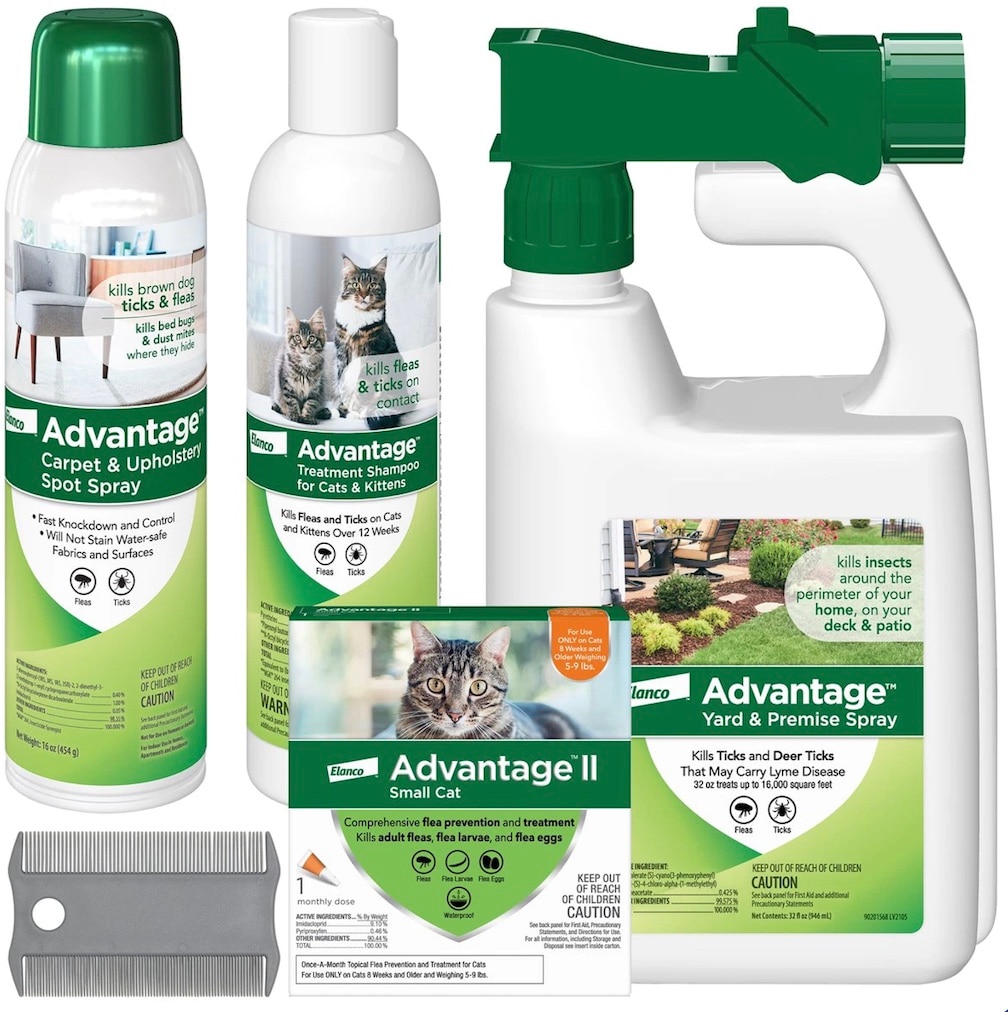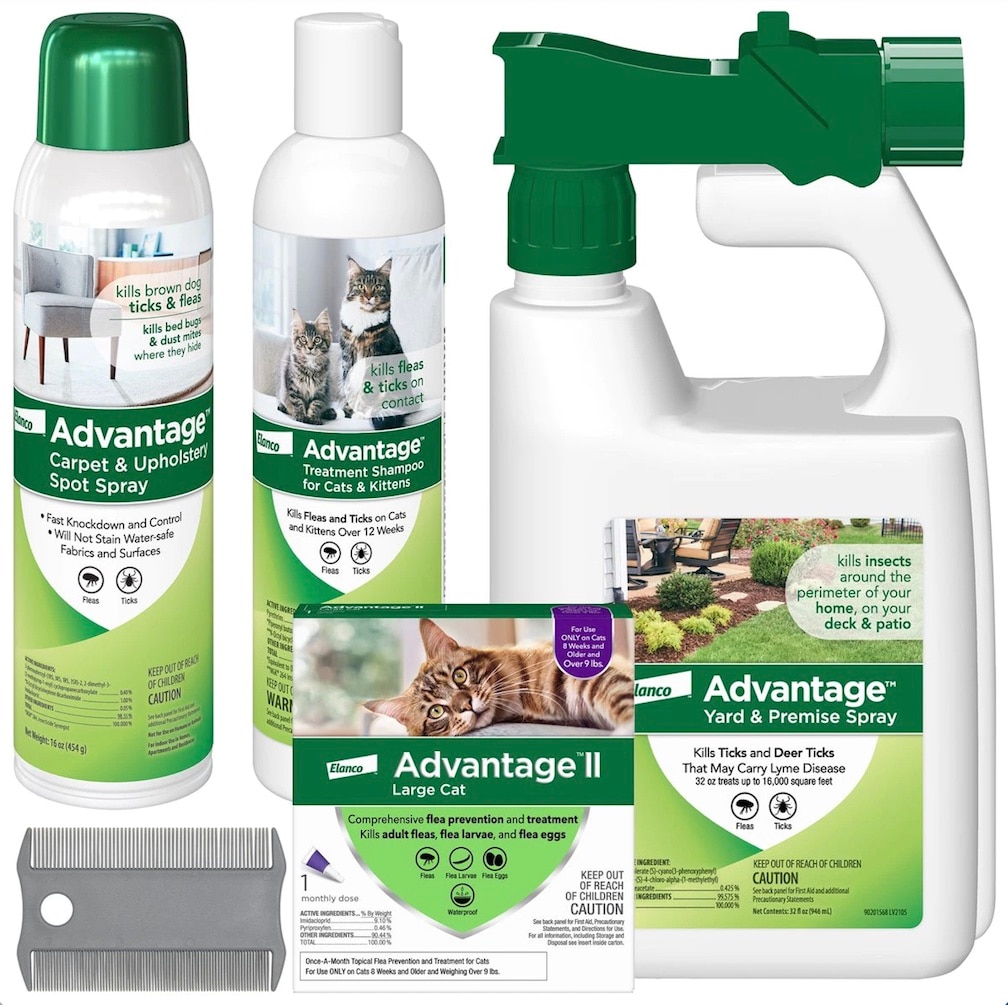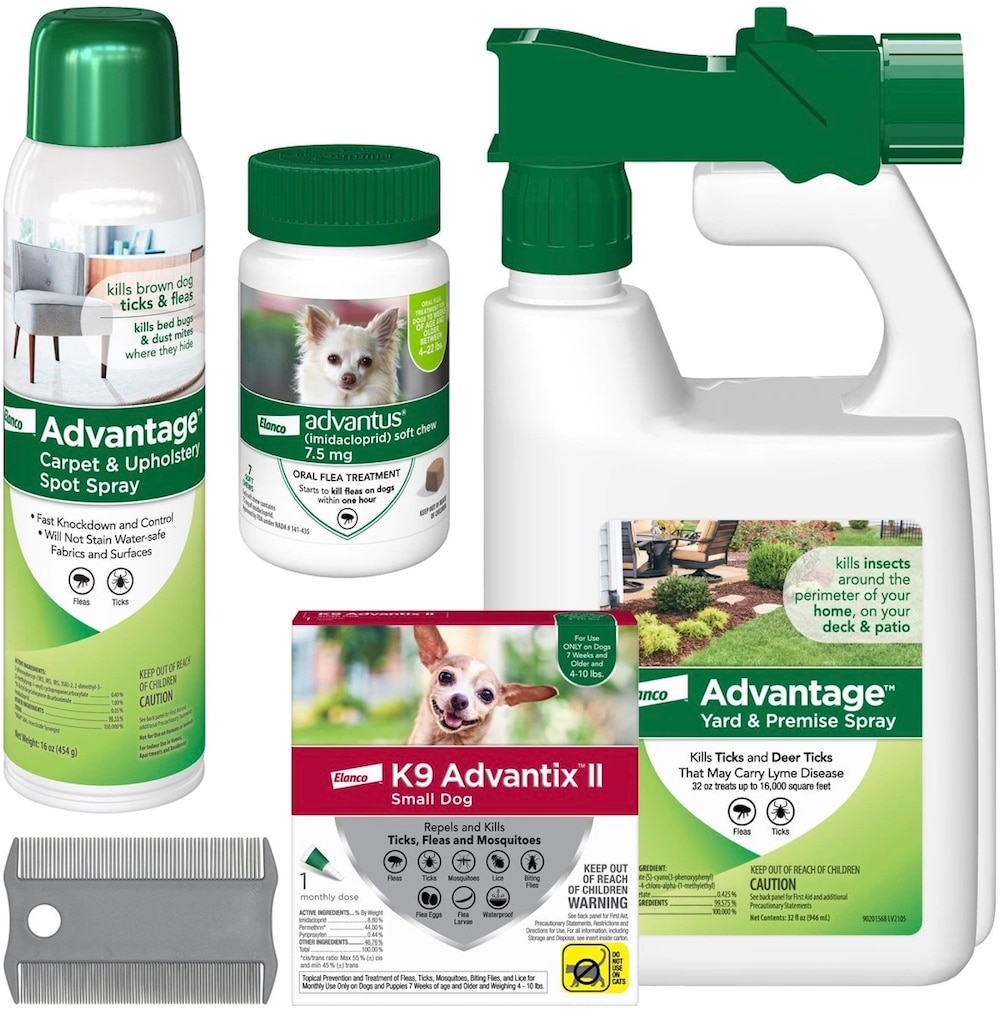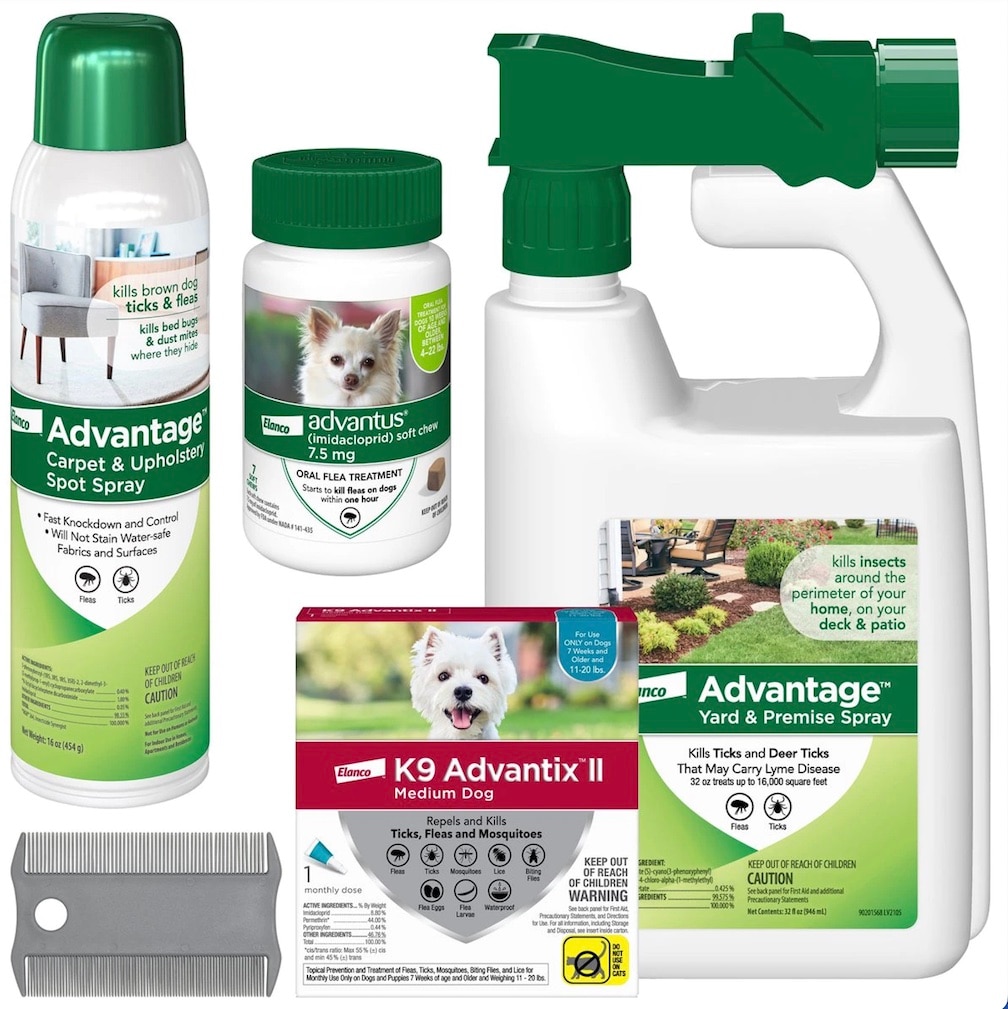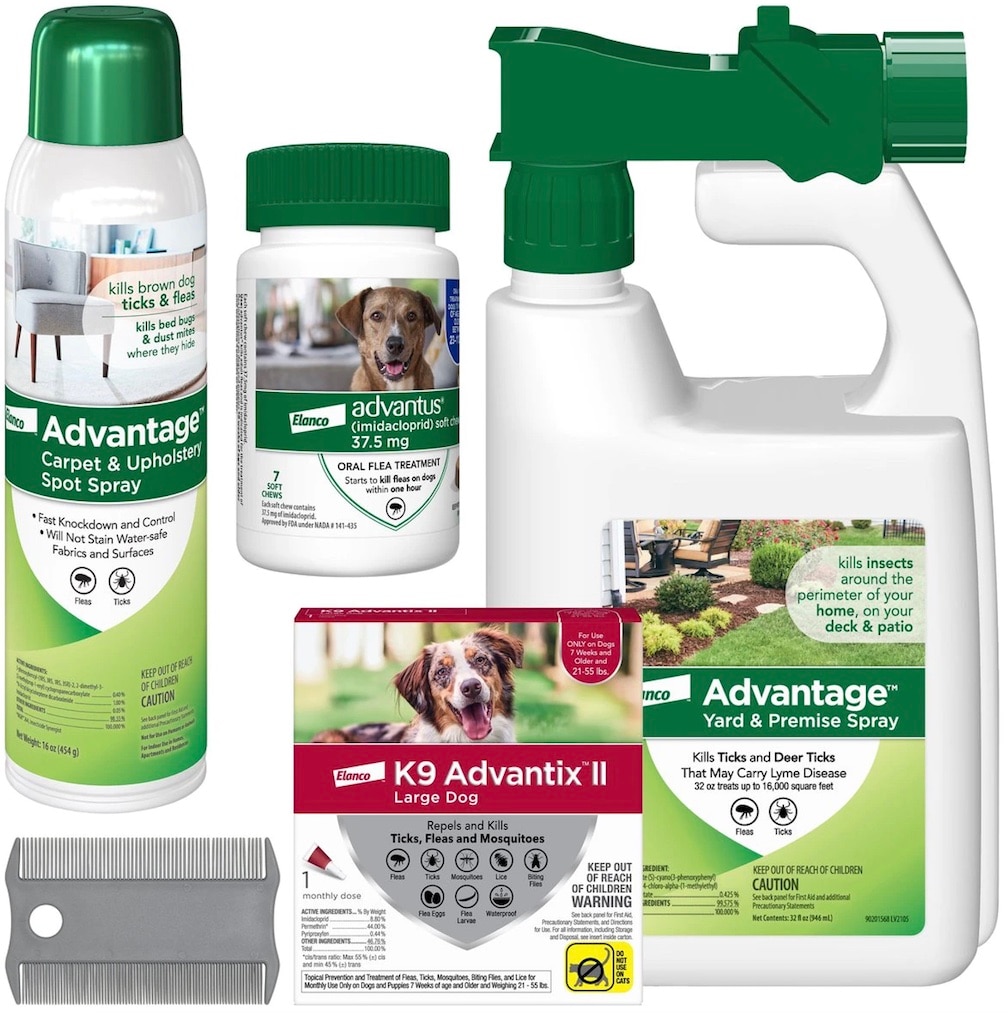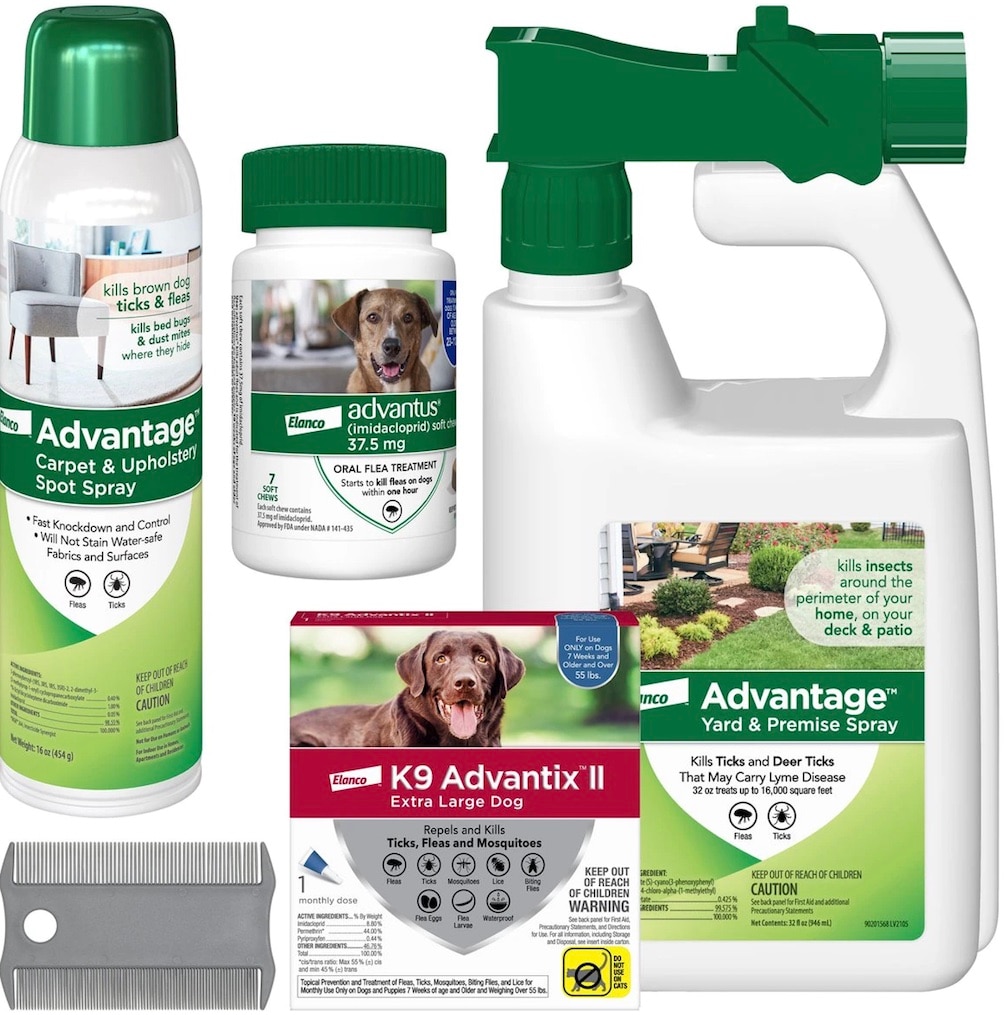Flea Infestation Guide: How to Kill and Get Rid of Fleas
Fleas are tiny but the suffering they bring to pets can be huge. The only way to stay ahead of a flea infestation is to practice flea prevention year-round, according to Dr. Cynthia Cox of the Shalit-Glazer Clinic at the MSPCA-Angell Adoption Center in Boston, Mass., and Dr. Cathy Lund of City Kitty, a feline-only veterinary practice in Providence, R.I.
“When you see the adult fleas, that is just the tip of the iceberg as far the life cycle,” Lund says. “At that point, you have a real problem in the house.”
David Jones of Bio Tech Pest Controls in Westerly, R.I, an environmentally friendly pest control business, explains why: The adult flea needs a blood meal (your pet, for example) in order to produce fertile eggs (40-plus per day), which then fall off the animal and drop to the floor, carpet, bedding, etc. The eggs develop into larvae and then into pupae that are protected inside cocoons, which can lay dormant for many months until noise, heat, vibration, light, exhaled carbon dioxide, or other stimulation causes them to emerge as fleas to start the cycle again.
By the time you see a flea, you’re likely already in the midst of a flea infestation.
Practice Flea Prevention to Stop Flea Infestations
To prevent a flea infestation, treat your pet year-round throughout his life with flea preventives—typically a topical liquid, flea collar, or oral medication applied or given monthly to dogs and cats. Dosages of topical and oral flea prevention products depend on the weight of the animal. Some products protect against fleas, fleas and ticks, or other parasites, such as heartworm and intestinal parasites. Talk to your vet about which flea prevention product is best for your pet.
Cox notes that if you have a cat, it is essential to use the cat-specific version of any flea product, in consultation with your vet. “While many are now over the counter, some contain insecticides with a very narrow margin of safety that can result in the illness or death of companion animals, especially cats,” she says.
And never apply flea preventative on cats that is marketed for dogs—and vice versa.
Flea Infestations: Comprehensive Treatment to Kill Fleas
If your pet has existing fleas, you can brush them with a flea comb to remove fleas and their eggs. Soapy water can also be used to kill fleas.
Flea bites can cause real suffering, with constant itching and scratching that can lead to skin irritation and even infection, especially if your pet is allergic to flea saliva. “They can get super itchy, and the skin can become raw and irritated,” Lund says.
Pets—and people—are also at risk of diseases carried by fleas. Some examples include cat scratch fever (Bartonella henselae), tularemia (Francisella tularensis), plague (Yersinia pestis), tapeworms, and more.
If your pet has fleas, or you're concerned about fleas, one effective approach is to treat your property and home, as well as your pet, to eliminate eggs and adults fleas. The following product bundles offered by Chewy.com (PetMD is owned by Chewy) offer protection for your pet, inside your home, and outdoors. Always consult with your veterinarian before using flea and tick control products.
Pet, Yard, and Home (Smaller Animals)
- Advantage II Spot Treatment
- Advantage Shampoo
- Yard & Premise Spray
- Carpet & Upholstery Spot Spray
- Frisco Flea Comb
Pet, Yard, and Home (Larger Animals, over 9 lbs.)
- Advantage II Spot Treatment
- Advantage Shampoo
- Advantage Yard & Premise Spray
- Advantage Carpet & Upholstery Spot Spray
- Frisco Flea Comb
Advantix + Pet, Home, and Premises (Under 11 lbs.)
- K9 Advantix II Spot Treatment (4-11 lbs.)
- Advantus Oral Treatment (4-22 lbs)
- Advantage Yard & Premise Spray
- Advantage Carpet & Upholstery Spot Spray
- Frisco Flea Comb
Advantix + Pet, Home, and Premises (11-20 lbs.)
- K9 Advantix II Spot Treatment
- Advantus Oral Treatment
- Advantage Yard & Premise Spray,
- Advantage Carpet & Upholstery Spot Spray
- Frisco Flea Comb
Advantix + Pet, Home, and Premises (21-55 lbs.)
- K9 Advantix II Spot Treatment
- Advantus Oral Treatment
- Advantage Yard & Premise Spray,
- Advantage Carpet & Upholstery Spot Spray
- Frisco Flea Comb
Advantix + Pet, Home, and Premises (Over 55 lbs.)
- K9 Advantix II Spot Treatment
- Advantus Oral Treatment
- Advantage Yard & Premise Spray
- Advantage Carpet & Upholstery Spot Spray
- Frisco Flea Comb
How to Get Rid of Fleas in the Carpet
Remember, if the fleas are on your pet, they are in your house. When trying to get rid of fleas in the home environment, it is important to wash all rugs in hot, soapy water. For carpet which cannot be placed in the washing machine, vacuuming can be very helpful in getting rid of adult fleas, eggs, and larvae, Jones says. Just be sure to immediately take the vacuum outside to remove and dispose of the bag. Do not leave the bag inside the house, he stresses. Steam cleaning or shampooing the carpets may also be useful but often chemical treatment may be needed to fully eradicate a flea infestation.
For indoor flea treatment, there are over the counter home products for sale but often they are used incorrectly and therefore not effective. When treating the house for fleas, it is recommended to call a professional exterminator. Be sure to tell them there are pets in the home and find out any restrictions such as time they need to be out of the house during treatment.
How to Get Rid of Fleas in Your Bed
How to Get Rid of Fleas in Your Yard
Treating your yard is another important aspect of preventing and treating fleas. This can be done through external yard treatments purchases over the counter or through a lawn care provider. Be sure to let the company know you have pets and read all instructions related to how long the pet needs to be off the lawn. Often treating the lawn once or twice per year is recommended for maximum effectiveness.
Remember year-round flea prevention medication is essential for preventing flea infestations. Your veterinarian is the best source of information for flea, tick, and heartworm prevention for your pet.
Help us make PetMD better
Was this article helpful?

